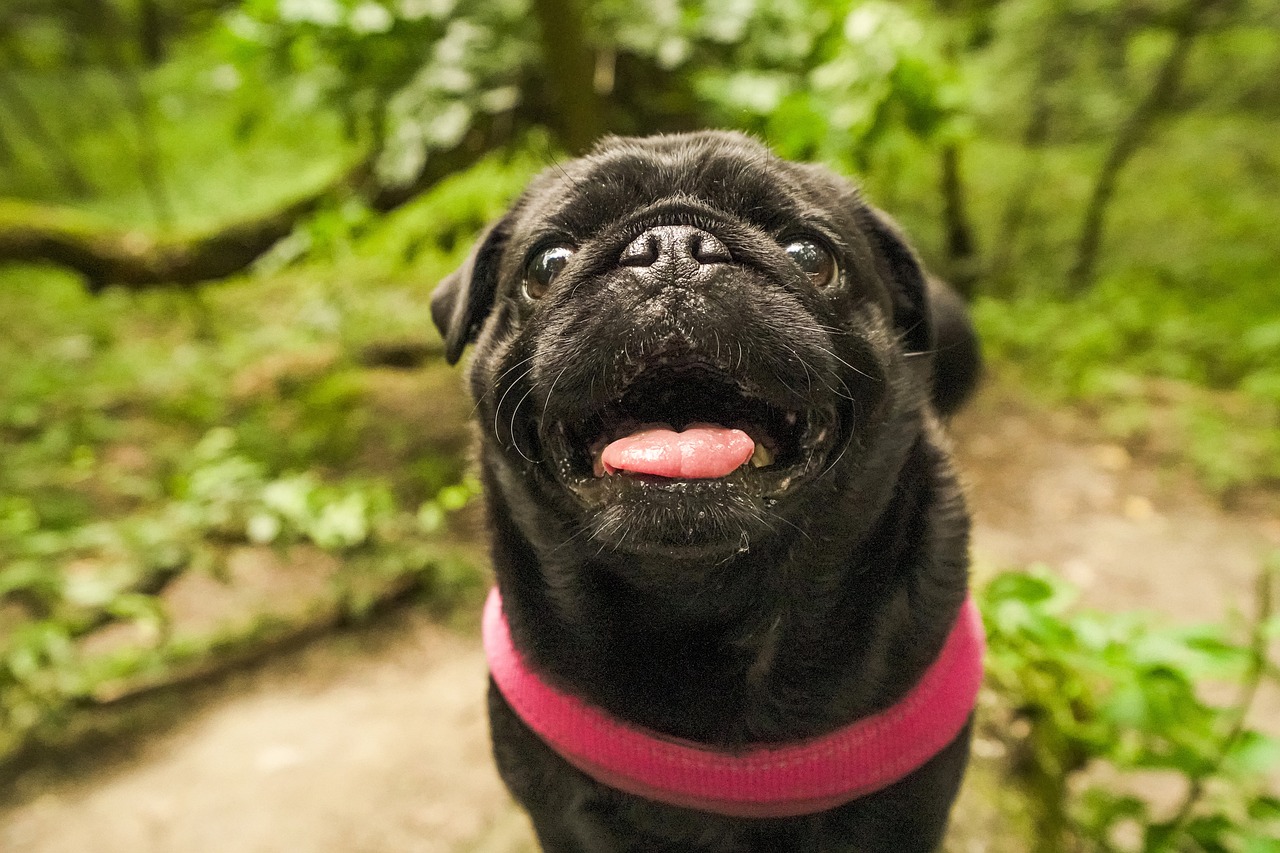Pugs are one of the most distinctive and beloved dog breeds, known for their squished faces, expressive eyes, and compact, muscular bodies. Originating in China around 400 BC, they were prized by Chinese emperors and later became popular across Europe, charming royalty and commoners alike with their playful and affectionate demeanor. Despite their friendly nature, pugs exhibit a series of unusual habits that not only endear them to their owners but also reflect their unique physiological and psychological traits. These habits, ranging from their comedic snoring to their penchant for shadowing their owners, make pugs a constant source of amusement and curiosity. Understanding these behaviors is crucial for any pug owner, as it helps in providing the right care and companionship that these charming canines need to thrive. This article explores the seven most unusual habits of pugs, shedding light on each behavior and its implications.

1. Enthusiastic Snoring
Pugs are notorious for their loud, enthusiastic snoring, a habit that can be traced back to their distinctive facial structure. Their short noses and flat faces, characteristics of the brachycephalic breed, create narrow airways, which can lead to noisy breathing and snoring even when they’re awake. While this snoring is often seen as endearing and part of their charm, it is important for owners to monitor this trait closely as it can signal breathing difficulties. Ensuring that pugs stay at a healthy weight and consulting with a vet if their snoring seems to impede their comfort are good practices to keep this unusual habit from turning into a health issue.
2. Following Like a Shadow
Pugs often exhibit what is affectionately known as “Velcro dog” behavior, sticking closely to their owners like a shadow. This habit stems from their history as lap dogs bred to provide comfort and companionship. They thrive on human interaction and can become anxious or unhappy if left alone for extended periods. For pug owners, this means ensuring that their furry friend is included in family activities and considering a pet sitter or daycare when long absences are unavoidable to keep their pug happy and healthy.
3. Sunbathing
Pugs have a peculiar love for basking in the sun. This sun-worshipping behavior can be quite pronounced, with pugs often seeking out patches of sunlight in which to lie down and relax. While this is generally harmless and can be a source of amusement, it is crucial for owners to monitor their pug’s exposure to direct sunlight, especially in warmer climates, to prevent overheating and dehydration due to their sensitivity to heat, attributed to their brachycephalic traits.
4. Sensitive Stomach
Pugs often have a sensitive stomach, which can manifest in dietary pickiness or gastrointestinal upset. This breed tends to have a more delicate digestive system, making them prone to flatulence and other digestive issues. Providing a diet formulated for sensitive stomachs, avoiding human food, and regular, small meals can help manage this unusual habit and keep your pug in good health.
5. Curly Tail Unfurling
The pug’s curly tail is one of its most adorable features, but you may notice that it unfurls when they are relaxed or asleep. This phenomenon occurs because the muscles relax, releasing the tension that curls the tail. Observing when your pug’s tail unfurls can be a good indicator of their mood and comfort levels, offering insights into their emotional well-being.
6. Perceptive and Responsive to Emotions
Pugs are highly perceptive and responsive to their owner’s emotions, often reacting to feelings of sadness or distress with comforting gestures, such as cuddling or licking. This habit underscores their role throughout history as companion animals. They are naturally empathetic and can be great emotional support for people, making them excellent family pets who provide much more than just entertainment.
7. Wheezing and Reverse Sneezing
Pugs often exhibit wheezing, sneezing, and a peculiar habit known as “reverse sneezing.” These are due to their compact facial structure, which can cause minor breathing challenges. Reverse sneezing, in particular, is a rapid and noisy inhalation of air through the nose, sounding distressing to owners but usually harmless. Knowing how to calm a pug during these episodes and when to seek veterinary advice are important parts of caring for a pug.
Learn More About the Pug Dog Breed: Information, Facts & Pictures
Pugs, with their array of unusual habits, offer a unique blend of comedy, comfort, and companionship to their owners. While some of these behaviors are quirky and endearing, they can also point to health considerations that are crucial for pug owners to address. By understanding and appropriately managing these habits, pug owners can ensure their pets lead a comfortable, happy, and healthy life. These small dogs with big personalities continue to capture hearts not just with their charming looks but with their distinctive and sometimes perplexing behaviors.
 Toledo, United States.
Toledo, United States.
